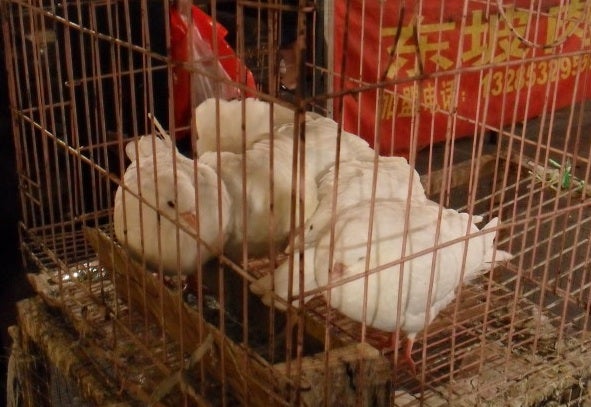What You Need To Know About The New Bird Flu
The H7N9 avian flu virus outbreak in China has already killed 11 people. Here's what's up with it.

There have been some new developments in China’s struggle with bird flu over the past two days, including another confirmed death and a scientific report from Chinese researchers about the first three victims to die. Here’s what else you’ll want to know:
What is it? The disease is a bird flu (a virus that originated from one adapted to attack birds) of particular type, called H7N9. This is the first time an H7N9 virus has been found to infect people.
How many has it affected? H7N9 has infected 43 people in China, but hasn’t spread outside of China. Eleven people have died, the World Health Organization announced today.
How does it work? The virus appears to be passed among birds and from birds to people, but doesn’t seem to spread easily from person to person, a trait necessary for a pandemic. However, the U.S. Centers for Disease Control and Prevention say some human-to-human spread “would not be surprising.” International and Chinese officials are monitoring more than a thousand people who have come into contact with infected people, CNN reported.
What are the effects? A new report from Chinese scientists, focusing on the first three people to get sick, described a pretty severe disease. The three patients, who all died, developed severe pneumonia and fluid buildup in the lungs. Two experienced damage to the brain and one unfortunate patient, a 35-year-old woman, also underwent septic shock and kidney failure. All three received patients relatively late treatment, when they were already critically ill.
In an opinion piece accompanying the Chinese report, Centers for Disease Control and Prevention scientists wrote that genetic features in the current H7N9 virus suggest that it wouldn’t cause severe symptoms in birds, so it may spread in a flock without anyone noticing. The virus also has features that suggest it may be well adapted to infecting mammals. And because H7N9 has never infected people before, humans are unlikely to have immunity.
Chinese scientists have posted the genome sequence of the virus, so it’s freely available to scientists all over the world. They also sent a sample to the U.S. Centers for Disease Control and Prevention yesterday, the New York Times reported.